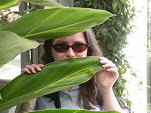Saturday, July 28, 2012
In Bloom: Summer Miniature
Dyakia hendersoniana, formerly known as Ascocentrum hendersonianum, is a very adorable miniature species. These bloom on an inflorescence up to 6 inches high covered with wee, purple-pink flowers with a white lip in late Spring or early Summer. They can be grown along side Phalaenopsis, pretty much the same conditions but with maybe a little bit more light. I am keeping mine in slightly stronger light than the phals right now, but they spend the Winter in a slighty shadier spot. Great plant for those of you looking to branch out, and great plant for the miniature collectors out there too! Now available in the shop! :)
Labels:
in bloom,
orchid culture,
orchids
Wednesday, July 4, 2012
In Bloom: Isn't she lovely?
Cattleya aclandiae
I'm quite happy with this. No, it could have a flatter lip, and my camera could have been less recalcitrant about the color of the lip. It is actually a very nice deep red-purple in real life, but that shade is just not in my camera's repertoire. Overall, the color is very dark and rich, which is the form I like most in this species. As a bonus, it is wildly fragrant from morning through early afternoon, with a fragrance resembling a very nice rose, but a good deal more potent.
I had a few aclandiae, and after being told they like it dry and hot, I proceeded to mount most of the plants I had. They did well during the summer, but of course, during the winter I sometimes ignore stuff, and several croaked. Turns out, if you're lazy with the watering in winter, they're a lot happier in a pot...(see photographic evidence above!)
Sunday, July 1, 2012
In Bloom: Albizia julibrissin
All over Maryland Albizia julibrissin trees have been in bloom for the past few weeks. These are also known as Mimosa or Silk Trees, though the former more properly belongs to a related genus to which the diminutive Mimosa pudica (sensitive plant) belongs. I've you've seen those, you'll recognize the family resemblance. The plant in the photo is a volunteer, which admittedly came up a little close to the house, but they don't get that big and I like them so it stays. I have carefully protected this thing from 'helping hands', sloppy lawnmowing, and grazing horses since it was a wee, weedy sprout. Finally it has bloomed. I am quite pleased with its depth of color.
This species is found in much of the Eastern and Southern ranges of the US, but it is not native. It is actually introduced and naturalized, and also considered a weedy, invasive pest in certain areas, notably Florida and Tennessee, according to the USDA PLANTS Profile. Such is often the lot of plants in the pea family.
Yes, this is actually in the pea family. Family resemblance is more obvious in the structure of the foliage and the bean-like seed pods, less so the flowers due to lack of petals. Interestingly, however, if you look closely at that flower you'll notice that each of those pink filaments is tipped with yellow. Those are stamens.
I understand the species is highly susceptible to Fusarium wilt, and so can be short lived in the Northeast as a result. My mother used to tell me there were many of these trees 30-40 years ago in the DC area with fantastic color. Then they almost all died out, tragically leaving only the ones with pale color. Well, fortunately, they're weedy, and so are making an excellent comeback. They sure seem to be all over the place now.
Labels:
garden education,
in bloom,
plants,
wildflowers
Subscribe to:
Comments (Atom)




